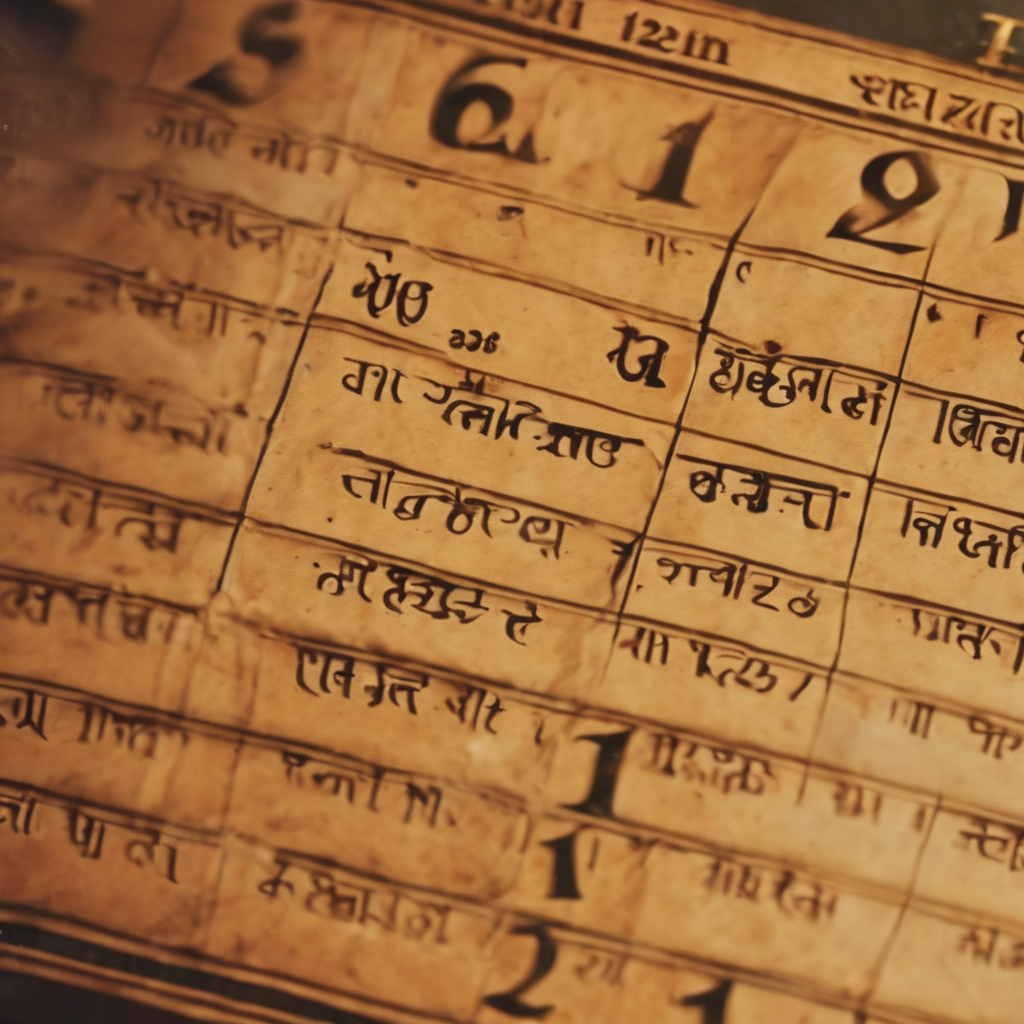The Panchang is a Hindu calendar that combines lunar and solar cycles deprived in the traditions of Hinduism, determining auspicious time points of religious rites and festivals. In the origins of ancient Vedic texts, the calendar was developed, distinguished over the years, refined by the Gupta dynasty.
Among all regional calendars, the Shalivahana Shaka, based on the King Shalivahana as well as the Indian national calendar is the one which is the most known and studied, while the Vikram Samvat or Bikrami – based on the era of the king Vikram of Ujjain, refers to the Vikram era, is the second The system is still prevalent in Northern and Western India. The calendar was applied from 57-56 BCE. The Indian National Calendar, which is more commonly known as the Saka calendar, had taken root as the official civil calendar in 1957.
The calendar of the Holds operates on a lunisolar system, a combination of the phases of the Moon and the location of the Sun. It is made up of a number of cycles-lunar months, solar days, and years. The calendar is a subtle interplay of these celestial bodies weaving a tapestry of time.
The Month: The twelve months of the year are lunar, wherein each month divided is divided into the bright half, the waxing of the moon, ‘shukla’ or ‘sud’ and the dark half, the waning of the moon, ‘krishna or vad paksh’. Punam is 15th day of sud half ( full moon), while Amãs shows the last day of vad half (new moon).
One lunar year accounts to 354 days whereas days in the Gregorian calendar, which is based on the solar system, are 365 ¼ days. This clearly reduces to one month within three years. This is because the Hindu lunar calendar has an intercalary month after every three years referred to as Adhik.
The Adhik month is regarded as more propitious, and is known as the month of Purushottam, Bhagwan.Observers of extra penance, bhakti and benevolence during this month get more blessings from God and their sins are cleansed. To say that at this time marriages and other auspicious events are not done.
The Week: The week is thus divided into seven days and each day is linked to one of the seven planets just as they are in the West. No day is special but each day is correlated with a distinct deity. For instance, Monday is frequently connected to Shiva and Tuesday to Hanuman.
The Day: Dawn or, according to whichever calendric and astral ritual is used, a few minutes before dawn is the time when the activities for that day start. The whole day is divided into 15 muhurtas, each containing 48 minutes approximately, and similarly the night is divided. The Gayatri mantra is traditionally chanted twice a day, at daybreak and at sunset since it is believed that these are the crucial time of the day. The first two muhurtas (about one hour) just before the break of dawn are regarded to be the most auspicious times, especially for doing meditative work.
| Vikram Samvat | Gregorian | Saka Samvat | Gregorian | |
| Baishakh | Apr-May | Chhaitra | Mar-Apr | |
| Jestha | May-Jun | Vaishakha | Apr-May | |
| Ashadh | Jun-Jul | Jyeshtha | May-Jun | |
| Shrawan | Jul-Aug | Ashadha | Jun-Jul | |
| Bhadra | Aug-Sep | Shravana | Jul-Aug | |
| Ashwin | Sep-Oct | Bhaadra | Aug-Sep | |
| Kartik | Oct-Nov | Ashwin | Sep-Oct | |
| Mangsir | Nov-Dec | Kartika | Oct-Nov | |
| Poush | Dec-Jan | Agrahayana | Nov-Dec | |
| Magh | Jan-Feb | Pausha | Dec-Jan | |
| Falgun | Feb-Mar | Magha | Jan-Feb | |
| Chaitra | Mar-Apr | Phalguna | Feb-Mar |
The Hindu calendar makes an essential contribution to defining the dates of numerous festivals and religious celebrations. This calendar also helps the country to manage some of the most significant festivals such as Diwali, Holi and Navaratri in terms of setting right dates of occurrence although this particular calendar includes various aspects of cultural and spiritual importance for particular timings.
Places of varying cultures in India observe forms of the Hindu calendar that are adapted to customs and tradition as well as have been influenced by history. For modern society, complementary information is provided with the development of digital Panchangs but the age-old practices persist, thus indicating that the calendar continues to be of great cultural heritage and religious importance even now. The seamless connection between celestial happenings and cultural behaviour, which is evident in the well-organized structure of the Hindu calendar, based on worldly wisdom, enables millions of people to walk through the timely canvas, revealing the depth of Hindu culture.

